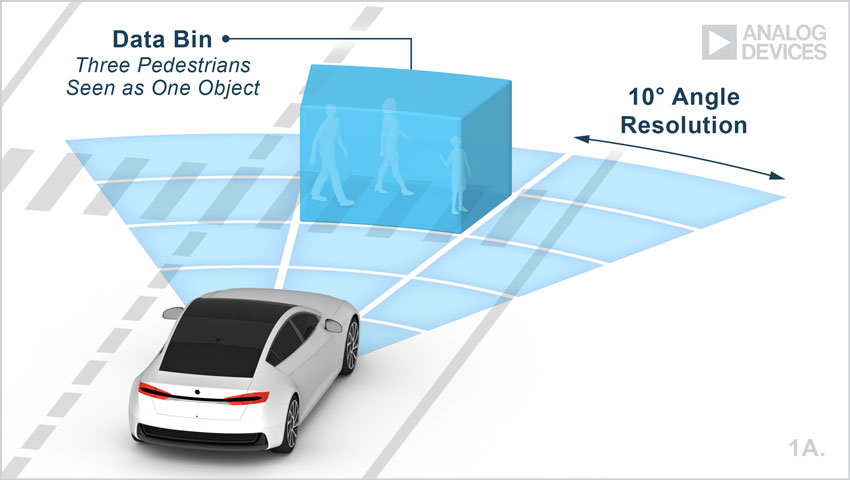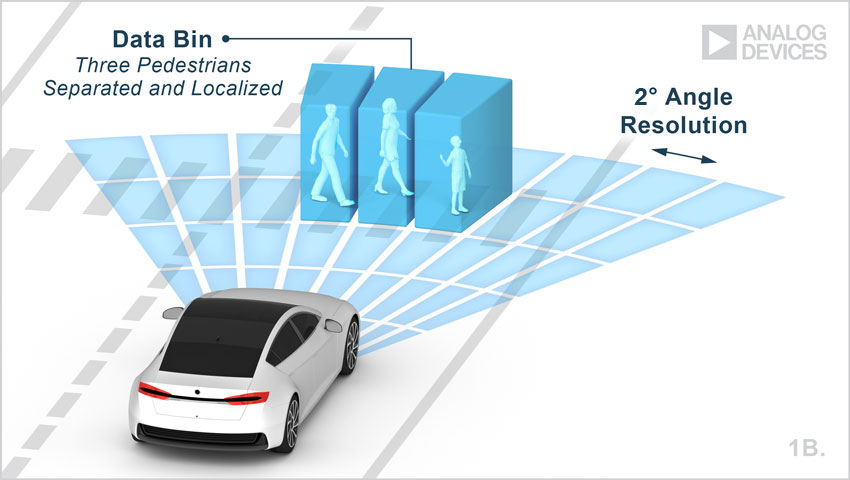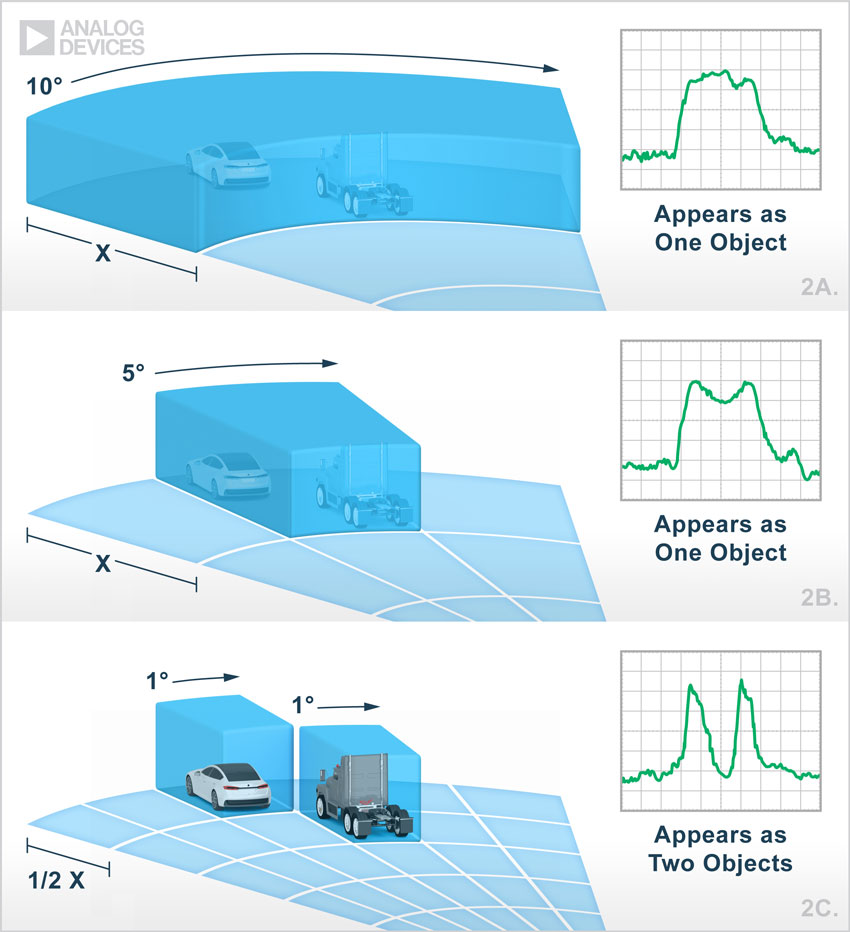Radar: The Road to an Autonomous Vehicle
Radar: The Road to an Autonomous Vehicle
The War on Accidents
Radar has been around for over 75 years and was instrumental in helping the Allies win WWII. Now, radar is being tapped to win another war—Vision Zero, the battle to eliminate all traffic fatalities and severe injuries while improving mobility across the globe. Smaller than the size of a cell phone, today’s automobile radar devices can detect if there is a large object in front of you, behind you, or in your blind spot off to the side. But that’s not enough.
Numerous high hurdles remain to reach the goal of a 100% safe, fully autonomous vehicle. What’s needed is the development of technologies capable of both detecting, discerning, and understanding the ENTIRE world around the automobile. In a quest to meet that challenge, Analog Devices, Inc. (ADI) and Astyx formed a unique partnership, collaborative method, and iterative process to take radar to the next level to save lives. ADI develops high performance RF, mixed-signal, and power management ICs. Asytx develops high performance radar modules targeted to highly automated and autonomous systems.
ASTYX AT A GLANCE
|
Company: |
Astyx develops and produces electronics for avionics, automotive, autonomous platforms development, industrial applications, satellite communications, and microchip manufacturers. |
|
Applications: |
Astyx HiRes II: A high resolution automotive radar for autonomous drive applications (powered by ADI’s CMOS radar MMIC) |
|
Challenges: |
Create a fully MIMO capable, low power, beamforming, 64 virtual Rx-channels, signal processing unit with a very fast 1 Gbps data rate. |
|
Goal: |
Be first to market with technology that demonstrates forward-thinking about the future. Smaller size, lower weight, lower power consumption, lower price. |
Genesis of a Partnership
Radar, in today’s automobiles, has a very coarse resolution. All it “sees” is a blob. It can detect something out there around a car—it could be a motorcycle or a pickup truck—but it can’t identify the object. By increasing resolution, via advances in hardware sensing technology and software algorithms, radar can discern various attributes around what it’s seeing—bringing us one step closer to a fully autonomous, safe vehicle. This was the common dream of Astyx and ADI.
“We saw a need for higher resolution radar data than was currently available,” said Peter Schmitz, president, Astyx. “High performance autonomous driving applications need to be able to separate a street sign from a bike from a child. An autonomous vehicle takes evasive action and turns, brakes, or accelerates for the safety of both vehicle occupants and vulnerable pedestrians.”
“Astyx wanted to conquer the autonomous vehicle market as a boutique tier 1 provider,” said Chris Jacobs, vice president of autonomous transportation and safety, ADI. “It develops software—algorithms that implement radar functions. We were able to give it the high integration level features and raw performance chip technology it needed to realize its vision of a cost-effective, high-resolution radar imaging solution in a compact form factor.”
The Resolution Issue and the Object Separation Challenge
Current conventional automotive radar offers a horizontal angle resolution of about 10° to 20° in a wide field of view. This level of resolution cannot distinguish between an SUV and a motorcycle parked next to it.
Low Resolution Radar and Hidden Objects

High Resolution Imaging Radar Reveals Hidden Objects

Years ahead of the competition, Astyx set out to develop imaging radar with a focus on improving resolution in all dimensions. At the same time, it would seek to evolve its technology to take advantage of the high level of integration and industry-leading performance of the ADI RF transceiver that was generations ahead of what was available on the market.
“To simplify, if you are building an object out of Legos, the smaller the Lego®, the more accurate your object. A car-sized Lego isn’t much use to a perception system; however, a baseball-sized Lego would allow you to paint a more accurate picture of the physical world using radar. That’s the concept of imaging radar.”
Zachary Karas, Product Marketing, Analog Devices
Astyx’s Imaging Radar Solution
Astyx and ADI’s higher resolution imaging radar vision offers drivers better decision making. In today’s market, current radar can tell you if there is a vehicle in your blind spot or a vehicle 200 meters in front of you.
Peter Schmitz, president Astyx said, “Having a large object in your blind spot will not be enough effective information to tell you if you can autonomously switch your lane. You need to know what the object is, how fast it is moving, is there a small object next to the large object that is obscured. Imaging radar gives you all of that.”
Two Objects that Look Like One (Solving the issue)
Radar bounces radio waves off of the corners of an object and sends back the object’s intensity, position, speed, and angle of arrival. If the object is smaller than the data bin area (the area of resolution), it cannot be accurately located. Or, it might be seen as part of a nearby object.

Radio waves detect objects as peaks. In Panel A, at 10° of angle resolution and poor range resolution, the two vehicles are perceived by radar as one object. In Panel B, at 5 degrees of resolution and better range resolution, the two vehicles are still perceived as one. In Panel C, at 1° of resolution and improved range resolution, the two peaks indicate two distinct objects ahead, and even the designation of car vs. truck begins to materialize.
As the resolution of the data bins increases, the better the ability for radar to discern the real world.
Partners: Astyx and Analog Devices
For three years, Analog Devices and Astyx worked together to debug the industry-leading digiMMIC RF transceiver. The Astyx system-level platforms were even showcased at CES in 2017 and 2018, and its imaging radar in 2019. Donal McCarthy, product line director automotive radar, ADI said, “It helped us identify system-level performance improvements that we might not have identified earlier. We worked with multiple partners and customers in this endeavor, but Astyx played an essential and very early role.”
Donal Mccarthy said, “Our first demo platform in 2017 was using half of the ADI transceiver. It wasn’t yet fully integrated or complete. We contracted Astyx to test out and to tell us, what looks good, what needs improvement, how do we get it up and running.” That first demo platform highlighted a host of system-level de-risking opportunities for ADI’s customers. One year later, Astyx was provided the fully integrated silicon, very early samples, and it was integrated onto a demo platform with a dual chip cascade, likely the industry’s first successful 77 GHz CMOS cascade, a very difficult task with one master and one slave chip, and synchronized phase. ADI also created the software that drives the chip—the firmware that handles the intense calibrations and brings up routines.
“The ADI chip was generations ahead of the competition, and knowing the ins and outs of the chip, we decided to use a highly integrated RF transceiver for our next generation imaging radar platform.”
Peter Schmitz, President, Astyx
The Next Big Step
Resolution in the Vertical

If the car is moving, current radar will see it because it will discern a shift in its doppler frequency pattern from the static background (the overpass). But if it’s not moving, the radar may not see it and will consider it as part of the underpass. In such a circumstance, a vehicle must either plow ahead or perform an emergency braking procedure at every overpass, because current radar cannot determine if there is a car stopped below the overpass or not.
Imaging Radar addresses this with high resolution in the horizontal angle, range, and Doppler to detect micro shifts in each dimension. Moving forward, the vertical resolution will also become an important part of imaging radar systems to give another guarantee of safety and redundancy to autonomous systems.
Today’s imaging radar is accepted as around 1 degree of angle resolution.
Moving Forward, How Do We Achieve a Sub 1°?
That’s the level of resolution that will be needed to know if there is a motorcycle in your lane 200 meters out and if it is moving or stopped.
The Big Questions: How can radar designers achieve a vertical resolution to navigate to drive over (obstruction on-road) or drive under (low height overpass) events? How do we detect and mitigate interference from opposing radars? How do we prepare radar for the data transfer and thermal requirements for both centralized and edge processing architectures?
These are the challenges that Analog Devices is actively solving as we seek to enable next-generation technologies for safe, robust autonomous driving. Technology-driven partners, like Astyx, who push the boundaries of traditional radar and flex our system and chip-level expertise, drive the industry forward beyond traditional thinking and propel us toward a safer autonomous future.
1 + 1 = >2
The Astyx partnership is one example of how ADI engages the autonomous vehicle marketplace differently to develop technologies and solutions that lead to business success.
“We realized we should collaborate,” said Chris Jacobs. “Astyx needed advanced chip technology to fully realize its high resolution radar goals of size, performance, and system efficiency. We were able to give it the tools, dedicated support, tailored software, and raw performance capabilities in our chip, and it mated that with its IP to create a unique solution for the marketplace. Our partnership goes far beyond developing a solution. We do joint business engagements together. Talk to customers together. We are making a real impact together in advancing the industry.”
About Astyx
Founded in 1997, Astyx GmbH is a spin-off of Daimler Benz Aerospace AG in Ottobrunn, Germany. Astyx develops and produces high frequency electronics for customers and partners in the fields of avionics, automotive (OEMs and Tier 1 suppliers), autonomous platforms development, industrial applications, satellite communications, and microchip manufacturers. As solution providers for safety-critical applications, Astyx highly specialized engineers provide cutting-edge innovations in the field of high frequency technology.
